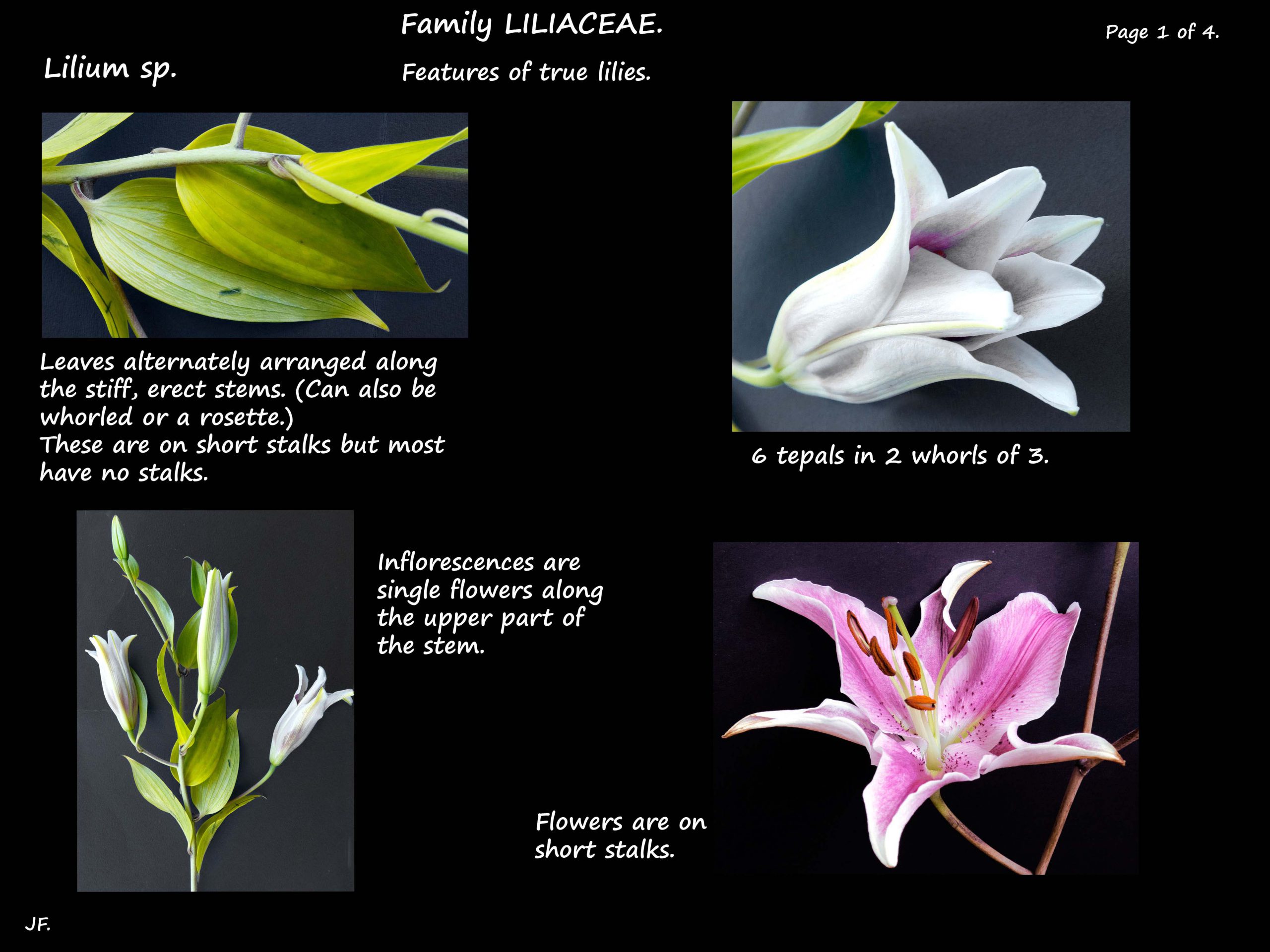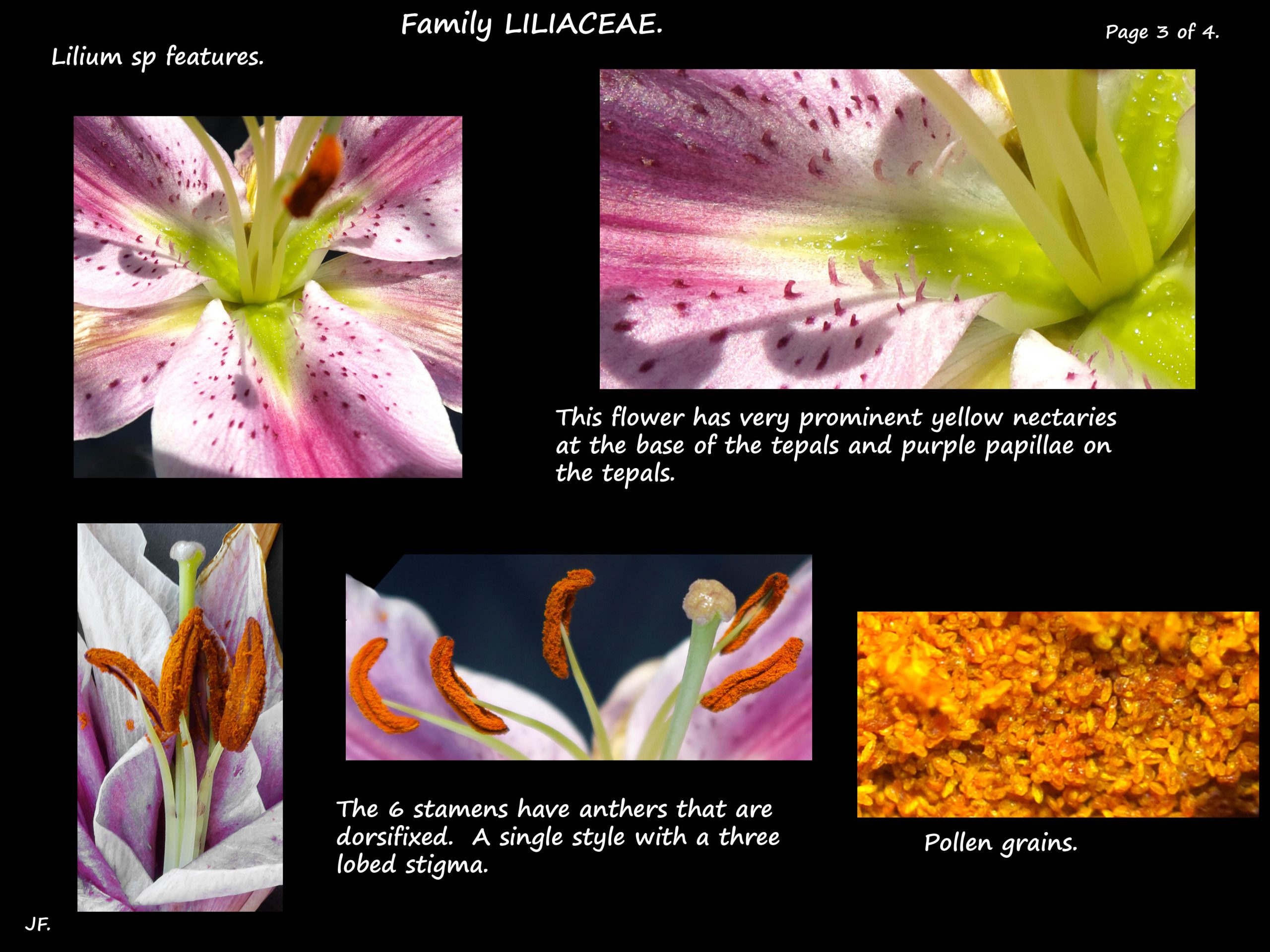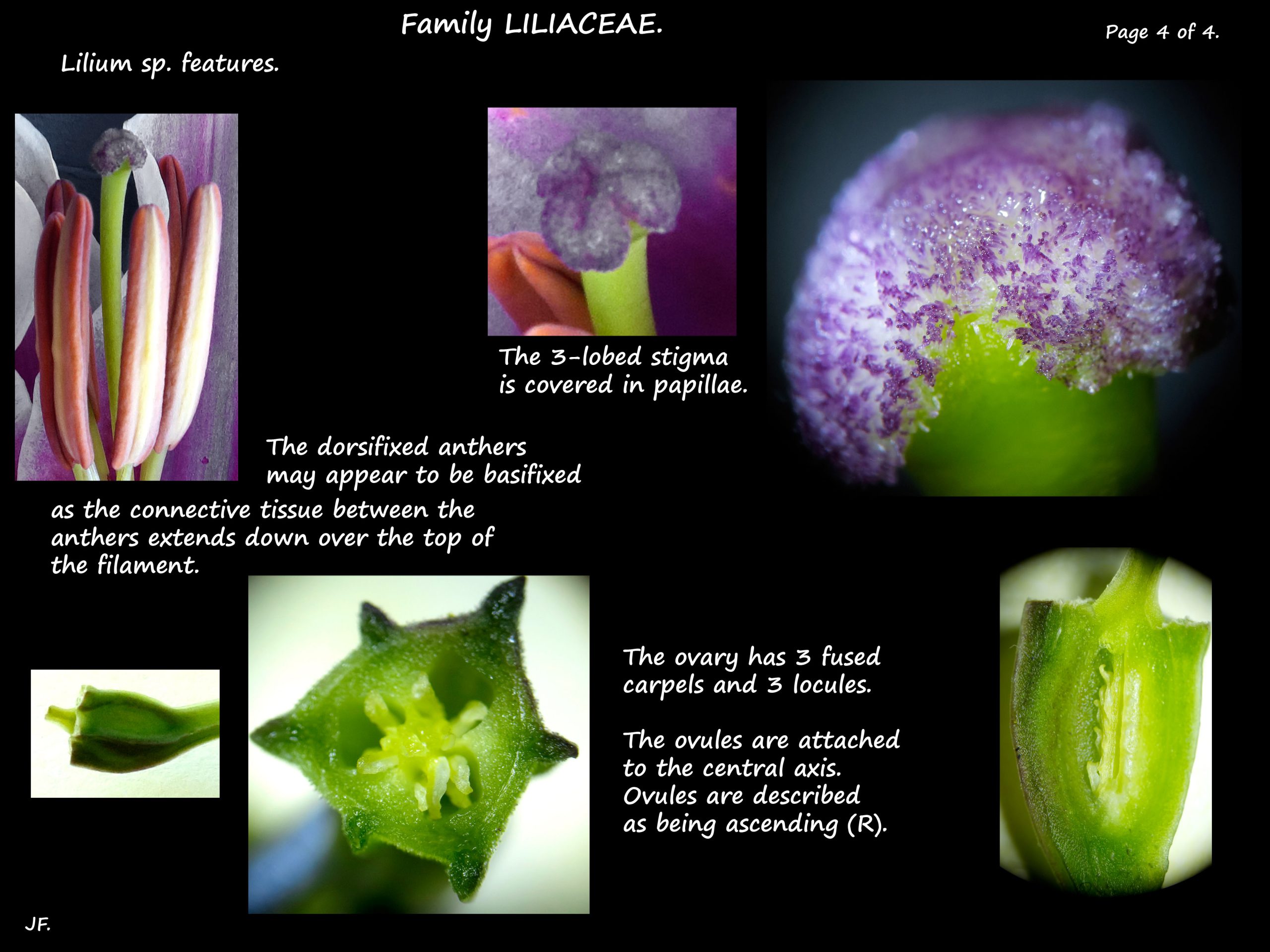Liliaceae family.
Initially all the monocots with flowers having 6 tepals (similar sepals and petals) were
included in one group with around 70 families, 250 genera and 4000 species.
There have been many changes in the classification over the years.
Genetic studies and other features now suggest they belong in 2 orders – the Asparagales and
Liliales although descriptions of them as one order are still seen.
Different classifications are also seen within the Liliales order with the Liliaceae and
Amaryllidaceae families being grouped together or, more frequently, as separate.
The generally accepted classification of the Liliaceae now appears to be into three subfamilies.
Subfamily Lilioideae, with 10 genera contains the largest number, and better known genera
including Lilium (110 species) and Tulipa (75) with larger and more showy flowers.
The other subfamilies are Calochortoideae and Streptopoideae.
Figures seen for the Liliaceae vary from 10 to 16 genera and 150 to 705 species.
The AGP 4 uses 15 genera.
The Liliaceae, although genetically related show a fairly wide range of features.
Plants are perennial herbs with bulbs with fleshy scales without a protective coating.
Their above ground stems are stiff and unbranched.
Leaves are mostly alternately arranged in a spiral but may be in whorls or a basal rosette.
The leaves are simple and rarely have a stem or petiole.
They can be ovate, lanceolate or linear and flat or folded.
Veins are almost always parallel, occasionally net-veined.
Inflorescences can be a single flower or a cluster along the stem.
The individual flowers are on short stalks.
Bracts are sometimes present.
Flowers are bisexual and usually large and colourful.
They come in a wide range of colors except blue.
There may be nectaries on the base of the tepals.
Flower parts are in 3’s with 6 perianth segments in 2 whorls of 3.
Usually they all look alike but the outer 3 may be smaller and less showy.
Shapes vary from cup, bell, trumpet, funnel or flat.
The tepals, or their tips, are often reflexed (bent backwards).
They are mostly free of each other and are commonly spotted, striped or multi-coloured.
There are 6 equal stamens in 2 whorls of three that are free of the perianth.
The anthers may be dorsifixed or pseudo-basifixed where the connective tissue between
the anthers surrounds the top of the filament.
They dehisce via longitudinal slits.
The superior ovary consists of 3 fused carpels and 3 locules.
Each locule has numerous centrally attached ovules (axile placentation).
The single style arises from the top of the ovary, sometimes in a small depression.
The stigma has 3 lobes.
The fruit is a dry, dehiscent capsule.
It usually splits into the chambers (loculicidal) but sometimes between them (septicidal).
The seeds may have wings or be wingless.
Reproduction can also be from daughter bulbs or bulbils on the stems.
Because of the large, showy flowers they are popular as cut flowers.
(Lilium stems always have leaves whereas Amaryllidaceae have flowers on bare stems.
Flowers in Liliaceae are terminal or along the upper part of the stem.
They may be clusterted close to the top but do not arise from a common point.
In Amaryllis flowers mostly form umbels with all arising from the top of the stem.)
J.F.





